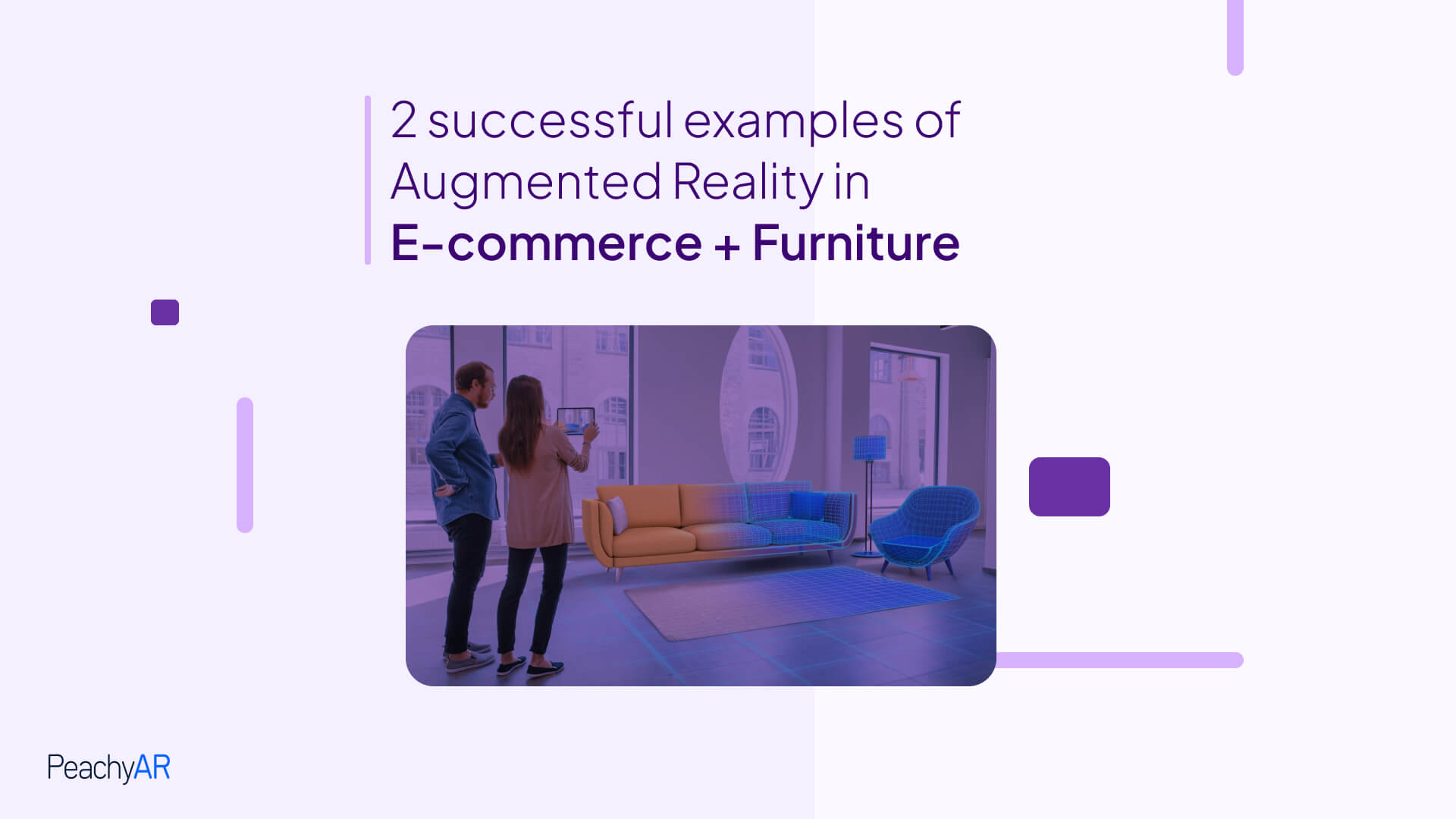The purpose of augmented reality in e-commerce is to bridge the gap between online and offline shopping experiences. In the rapidly evolving world of e-commerce, businesses are constantly seeking innovative ways to enhance the online shopping experience for their customers. One such technology that has gained significant traction is augmented reality (AR). By seamlessly merging virtual elements with the real world, AR has revolutionized how consumers interact with products and make purchasing decisions.
With AR, customers can visualize products in a realistic and immersive manner from their homes. This technology allows them to virtually try on clothing and accessories, place furniture in their living spaces, or even see how a new paint color would look on their walls.
By incorporating augmented reality into their e-commerce platforms, businesses can provide a more engaging and personalized shopping experience. Customers can now make more informed decisions by virtually experiencing products before purchasing. This not only boosts customer confidence but also reduces product returns and enhances overall customer satisfaction.
Furthermore, Augmented Reality in e-commerce opens up endless possibilities for marketing and branding initiatives. Brands can create interactive campaigns that allow users to engage with their products through gamification or immersive storytelling experiences. This level of interactivity increases brand awareness and fosters stronger connections between consumers and brands.
How can Augmented Reality In E-Commerce enhance the online shopping experience for customers?
Read More
Enhancing the Furniture Shopping Experience with Augmented Reality
Enhancing the shopping experience for furniture enthusiasts has become a paramount goal for retailers. The integration of augmented reality (AR) has become a game-changer, offering a truly immersive and interactive way for consumers to engage with potential purchases.
- Visualizing Furniture in Real Time
Gone are the days of second-guessing a furniture purchase. With AR, customers can visualize a specific piece’s appearance in their home environment. This feature eradicates the uncertainty of purchasing furniture, ultimately increasing customer satisfaction.
- Interactive Product Customization
AR technology allows users to customize furniture pieces in real-time. From adjusting the color of a sofa to experimenting with different fabric textures, customers can tailor their selections to suit their preferences perfectly. This level of personalization adds a new dimension to the shopping experience, making it more engaging and tailored to individual tastes.
- Eliminating Spatial Limitations
The utilization of AR in furniture shopping eliminates spatial constraints. Customers are no longer bound by physical store space limitations or measuring tapes’ confines. By virtually placing furniture in their desired space, shoppers can accurately gauge dimensions and determine if a piece fits seamlessly within their existing interior layout.
- Bridging the Online and Offline Shopping Experience
AR technology serves as a bridge between online and offline shopping experiences. Customers can now enjoy the convenience of online browsing while still experiencing the tactile, in-store feel of physically placing furniture within their home environment.
- Increased Confidence in Purchasing
AR instills confidence in purchasing decisions by providing a lifelike representation of furniture within a customer’s space. Customers can feel assured that the selected furniture pieces align perfectly with their decor and personal style.
Augmented reality has revolutionized the furniture shopping experience, offering customers a dynamic and personalized way to interact with potential purchases. This innovative technology enhances the overall shopping experience and empowers customers with the confidence to make well-informed decisions when investing in new furniture pieces.

The Purpose of Using Augmented Reality in E-commerce
AR technology transforms the way consumers interact with products online. Allowing shoppers to visualize and experience virtual product models in their real environment bridges the gap between the digital and physical shopping experience. For instance, customers can “try on” clothing or visualize furniture in their homes before purchasing, leading to more informed buying decisions.
- Overcoming the Limitations of Online Shopping
One of the biggest challenges in e-commerce is the need for customers to physically interact with products before buying. Augmented reality addresses this issue by providing a simulated hands-on experience, reducing uncertainty and increasing confidence in online purchases. This improves customer satisfaction and reduces product return rates for businesses.
- Building Brand Engagement and Loyalty
By incorporating AR into their e-commerce platforms, businesses can create memorable and interactive customer experiences. This sets them apart from competitors and fosters brand engagement and loyalty. The ability to offer unique AR-powered features can leave a lasting impression on customers, driving repeat purchases and word-of-mouth referrals.
- Empowering Personalized Marketing
Augmented reality enables businesses to deliver personalized and targeted marketing campaigns. By leveraging AR technology, retailers can offer customized product demonstrations, interactive product showcases, and immersive brand experiences tailored to individual customer preferences. This level of personalization can significantly enhance customer engagement and conversion rates.
2 successful examples of Augmented Reality in E-commerce
Augmented reality (AR) has revolutionized the e-commerce industry by providing immersive and interactive experiences to customers. This section will explore two successful examples of how AR has been implemented in e-commerce.
1. Virtual Try-On: Virtual try-on is one of the most impactful AR applications in e-commerce. This feature allows customers to virtually try on products such as clothing, accessories, or even makeup before purchasing. By using their smartphones or computers, customers can see how a product would look on them in real-time, eliminating the need for physical try-ons. This enhances the customer experience, reduces returns, and increases customer satisfaction, like Sephora, Watch the Video below;
2. Furniture Placement: Another successful implementation of Augmented Reality in e-commerce is furniture placement. Many furniture retailers now offer AR-enabled apps that allow customers to visualize how furniture pieces would look and fit in their homes without moving them around. Customers can simply use their smartphones or tablets to place virtual furniture within their space, helping them make more informed purchasing decisions.
These examples highlight how AR technology enhances customers’ shopping experience by bridging the gap between online and offline retail experiences. As technology advances, we can expect more innovative uses of augmented reality in e-commerce that will further transform how we shop online.
Use PeachyAR to enhance your customer’s shopping experience
PeachyAR is the perfect solution for businesses to enhance their customers’ shopping experience. With PeachyAR, you can create an immersive and interactive shopping experience that will keep your customers engaged and coming back for more. Whether you’re looking to showcase your products in 3D, provide virtual try-ons, or offer personalized recommendations, PeachyAR has got you covered. So why wait? Sign up free for PeachyAR today and take your customers’ shopping experience to the next level!





